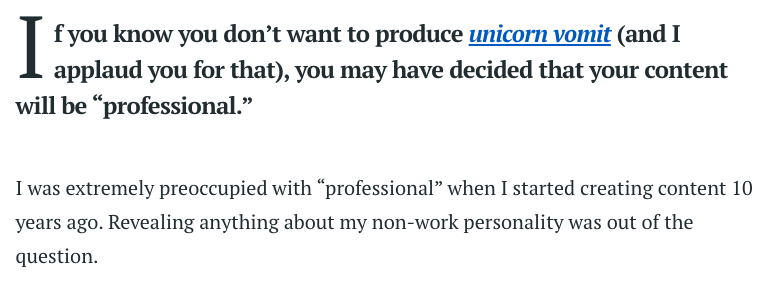
7 Must-Haves for an Engaging Blog Introduction
“Ladies and gentlemen, the moment you’ve been waiting for…” – wrong kind of blog introduction? Not necessarily, as you’ll see.
You work long and hard to write a blog post, but that effort will be wasted if no one reads beyond its introduction. Here are our magnificent seven tips for writing that all-important opener to hook your readers and keep them reading to the end.
What Is the Purpose of an Introduction?
A good blog introduction can make all the difference in engaging your reader. With those initial few sentences immediately following the title, you will entice readers to continue to the end, and you do that by clearly and succinctly stating what they will get from the post.
How to Write a Blog Introduction
You could, of course, simply introduce your blog post with “This is my post about…” But a good introduction will need something more than that. These are our top tips.
1. Know Your Audience
Who are you hoping will read your post? Try putting yourself in their shoes and consider what would make you want to keep reading. If you’re not familiar with the target audience, do some research.
2. Find a First Sentence Hook
It works for films – “Just when you thought it was safe to go back in the water…” (Jaws 2, 1978) – so why not for blog posts? Think of your opening sentence as the hook for your post: get that right, and you can start reeling in your reader. Try starting with a quote, a question, an interesting statistic, or having got to know your audience, you could employ some crafty psychology – “Don’t read this if you’re afraid of hard work!”
3. Identify – and Identify With – the Problem
Why should anyone read your post? Your reader will likely be looking for a solution to a problem, so identifying that in your introduction will clarify that they’re in the right place. No one likes to feel that they’re alone in finding something tricky. In your introduction, show that you empathize with the problem. Even better, show that you have experienced it. Then you will create a bond with your reader that will keep them reading.
4. Offer the Solution
How will your reader benefit from your post? It’s one thing to show that you understand the problem, but your reader will only read to the end with the promise of a solution. So, make sure to set out in your introduction that a solution will be given.
5. Explain the Benefit
What will your reader gain from reading to the end? Your reader may already be sold on getting a solution to their problem from a source who understands and has experienced it. But if you can hint at how this solution may further benefit them, so much the better.
6. Keep it Simple … and Short
Your introduction will set the tone for the post. Remember that your reader will want a quick and easy read, not War and Peace. You will quickly put off a time-poor reader with a long, convoluted introduction. Instead, restrict your opener to a few short sentences and make each one count. Go back over the above points and cut out anything that isn’t necessary.
7. Check It Relates – Or Write it Last
There’s nothing worse, as a reader, than being enticed to read a post only to get to the end and find that the introduction gave a false impression of what was to come. Avoid misleading introductions by checking them after you’ve written the full post.
Alternatively, you could crack on and write the post first and save writing the introduction to last. That way, you may have just the inspiration you need.
Blog Introduction Examples
Now that we’ve set out our tips, let’s look at how they come together in practice with some real-life examples.
The writer of this introduction to a post about reducing screen time shows an understanding of a problem likely to be on the minds of their audience and empathizes from the off – “you’re not alone.” They then promise a solution (seven tips) and explain how the reader will benefit – improved mental and physical health – from reading the whole post:

For that all-important first sentence, here’s an example of leading with a statistic from a post about how flexible work can help reduce caregiver burnout:

One way to connect with your audience and hook the reader with the first sentence is by using a quote from a well-known and much-loved movie, such as this one from a post about commonly misused words:

And how about this for an attention-grabbing opening sentence from a post about attracting better clients with the “chuckle point” technique:

Becoming a Freelance Writer
Now that you know what makes for a good blog introduction – and why it’s essential to have one – it’s time to work on yours. Remember our top tips, and you should be well on your way to engaging your readers from the opening line.
Of course, paying attention to the rest of your blog post is still important. Poor writing can be just as much a turn-off for a reader facing a wealth of online content. If you want to brush up your writing skills, our Becoming A Freelance Writer course covers everything you need to know to write professional blog posts and articles, including how to structure your writing. You can even try it out for free.





Your email address will not be published.